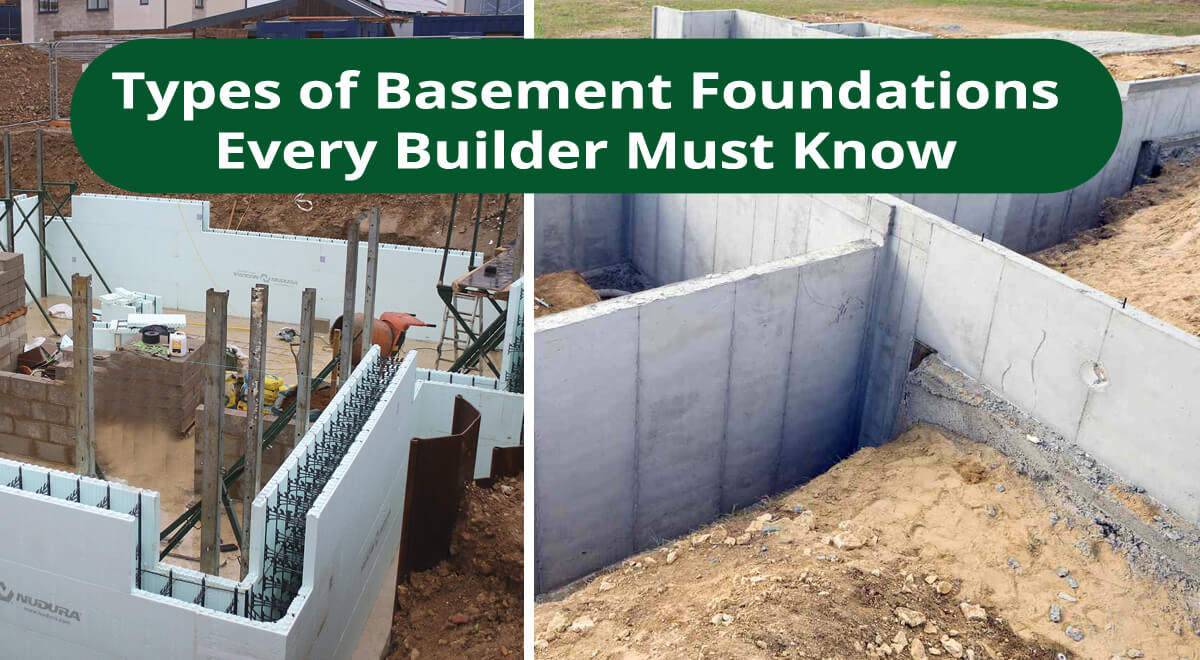Types of Basement Foundations Every Builder Must Know
TweetBasement foundations are a popular choice for many builders, offering additional living space, storage, and structural support to a building. Understanding the different types of basement foundations is essential for builders to make informed decisions and meet the specific needs of their projects.
1. Full Basement
A full basement is a type of foundation that spans the entire footprint of the building. It provides the maximum amount of below-grade space and is typically used in residential and commercial constructions. A full basement foundation offers versatility, allowing for various uses such as additional living areas, utility rooms, or storage. It requires excavation to the desired depth and may incorporate concrete walls, footings, and a concrete floor.
2. Crawl Space
A crawl space foundation is a type of basement that has a limited vertical clearance, typically allowing enough room for a person to crawl or crouch. It provides access to utilities, such as plumbing and electrical systems, and offers some storage space. Crawl space foundations are commonly used in areas with high water tables or unstable soil conditions. They are built with short foundation walls and a raised floor, often supported by piers or posts.
3. Walkout Basement
A walkout basement, also known as a daylight basement, is a type of foundation that incorporates a portion of the basement that is at or above ground level. It features one or more exterior walls with windows and doors, providing natural light and direct access to the outdoors. Walkout basements are particularly popular for sloped lots or properties situated on hillsides. They offer the opportunity to create additional living space with direct entry from the outside.
4. Lookout Basement
A lookout basement is similar to a walkout basement but is typically situated on a slope with only one side or a portion of the basement exposed above ground level. It allows for windows and natural light on one side while the remaining sides are partially or fully below ground. Lookout basements are commonly used when the terrain of the site allows for an elevated portion of the foundation.
5. Basement Garage
A basement garage is a type of foundation that includes space for parking vehicles below ground level. It provides sheltered parking and can help maximize the usable space on the property. Basement garages often have a separate entrance from the main living areas of the building and may require specific design considerations for proper ventilation and drainage.
6. Daylight Basement
A daylight basement is similar to a walkout basement and is designed to take advantage of natural light. It incorporates large windows and often has one or more sides exposed above ground level, allowing ample natural light to enter the space. Daylight basements can be transformed into comfortable living areas, home offices, or recreational spaces.
7. Finished Basement
A finished basement refers to a basement foundation that has been transformed into livable space. It involves adding insulation, flooring, walls, ceilings, and fixtures to create functional rooms such as bedrooms, bathrooms, or entertainment areas. Finished basements provide additional living space without the need for extensive structural modifications.
Conclusion
Understanding the different types of basement foundations is crucial for builders to make informed decisions and meet the specific needs of their projects. Whether it's a full basement, crawl space, walkout basement, lookout basement, basement garage, daylight basement, or finished basement, each type offers unique advantages and considerations. By considering factors such as site conditions, building codes, and client preferences, builders can choose the most suitable basement foundation type for their construction projects.

